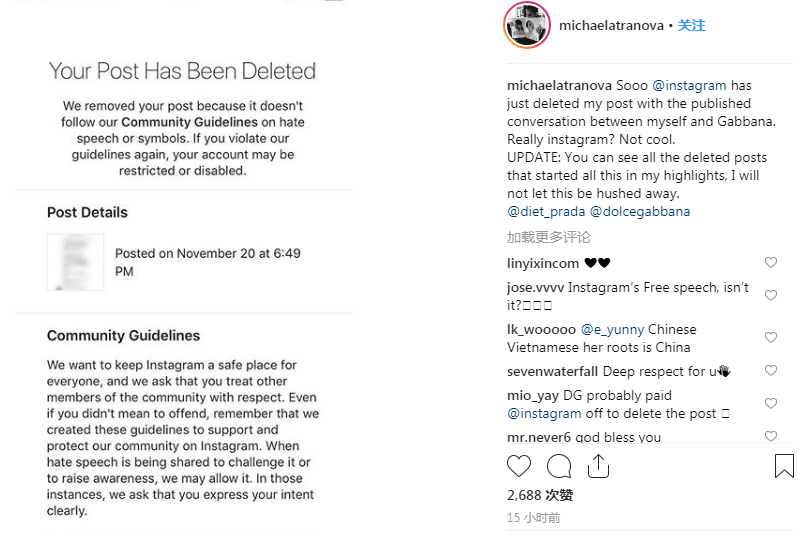02:03
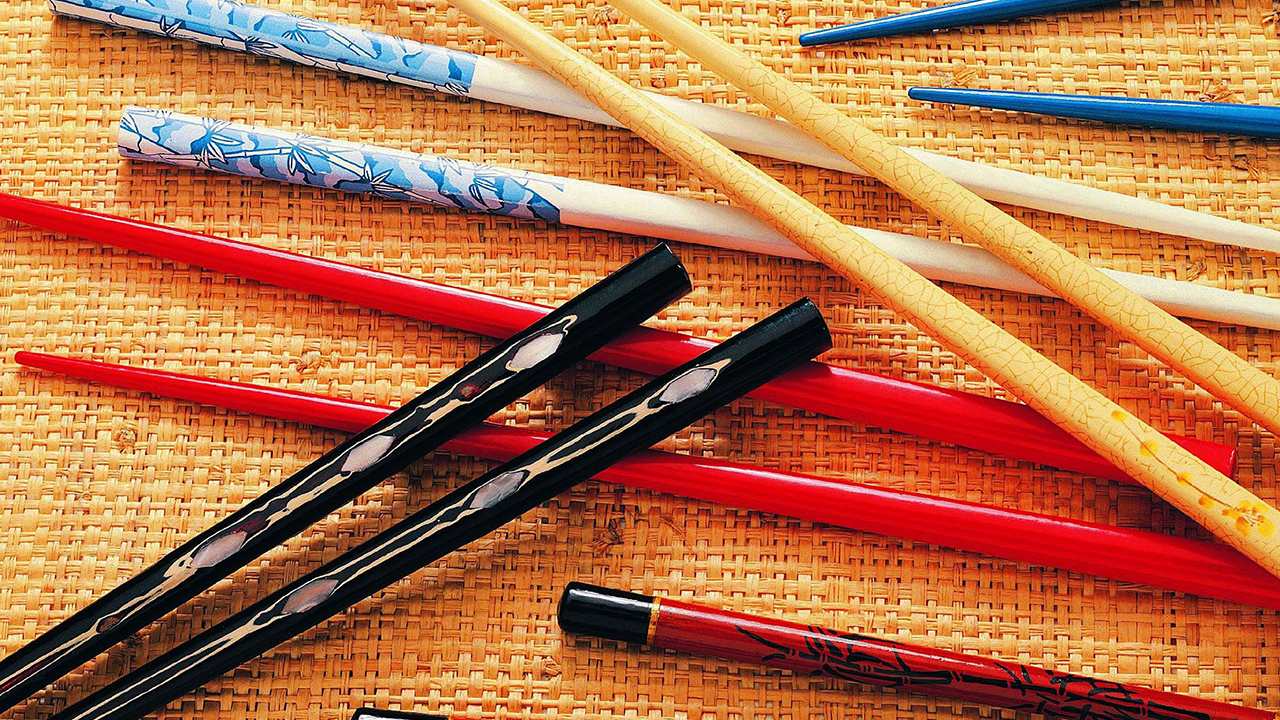
If you think chopsticks are just dining tools, you may be wrong.
When regular socializing happens inside a typical Chinese family, chopsticks are also about caring, sharing, and family ties.
Kids learn to use them at a young age. Travelers from abroad fancy them as part of a genuine Chinese experience. International students come back home and grab them for mom's meals.
They're about inheritance and education. They're about cultural communication. They're a sense of belonging. Chopsticks have long been a cultural and historical symbol for Chinese worldwide and also an important element which contributes to our Chinese identity today.

A family having a meal together in Shanghai, China /VCG Photo
A family having a meal together in Shanghai, China /VCG Photo
When the Italian fashion brand Dolce & Gabbana (D&G) posted
a series of offensive advertisements online about chopsticks, they would never have foreseen that The Great Show for which they had spent 8 million yuan for stage decoration, would have been postponed, or more likely, canceled, as a result.
Late on Thursday, major e-commerce platforms in China like Tmall, JD, RED, Kaola, and many others
stopped the selling of all D&G products.
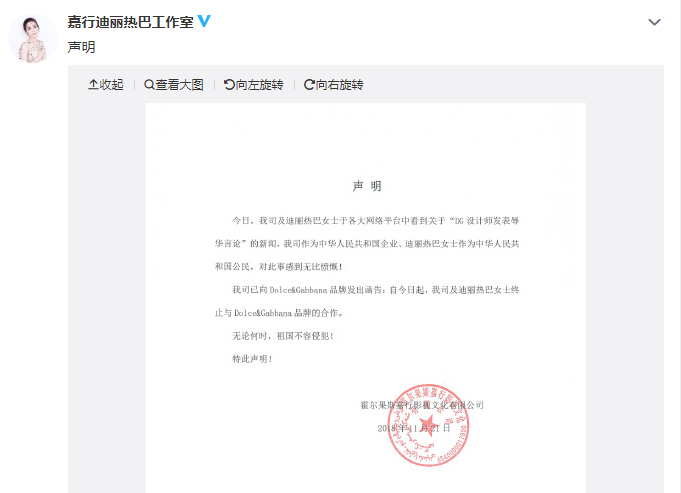
The official cooperation termination letter to D&G from Dilraba Dilmurat terminating his role as brand ambassador for the Asia Pacific region. /Screenshot via Weibo
The official cooperation termination letter to D&G from Dilraba Dilmurat terminating his role as brand ambassador for the Asia Pacific region. /Screenshot via Weibo
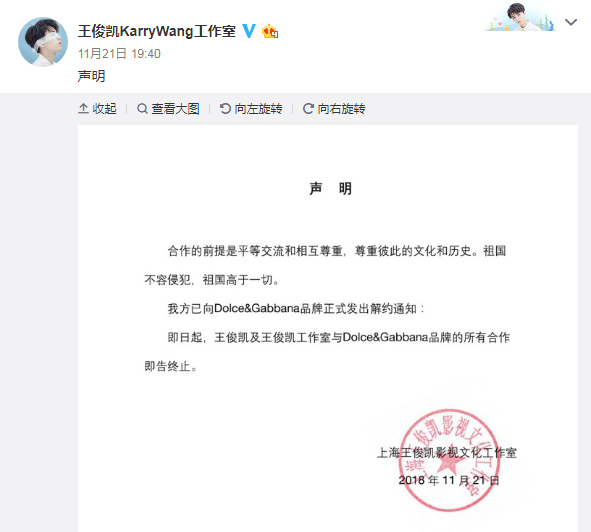
The official cooperation termination letter to D&G from Wang Junkai, D&G brand ambassador for the Asia Pacific region. /Screenshot via Weibo
The official cooperation termination letter to D&G from Wang Junkai, D&G brand ambassador for the Asia Pacific region. /Screenshot via Weibo
Its ambassadors for the Asia-Pacific regions, actress Dilraba Dilmurat and singer and actor Wang Junkai, also posted official letters on Weibo announcing the end of cooperation with the brand.
The @dolcegabbana account on Instagram also posted an explanation letter, but throughout the text, no "apology" was mentioned, and netizens' fury seems to have become even more intense.
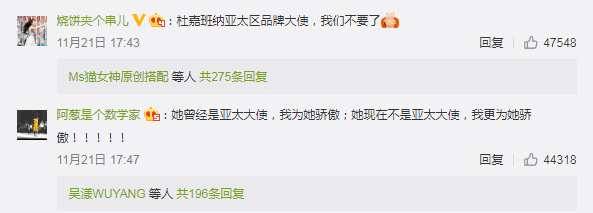
Some of the Weibo users' comments under the end-of-cooperation letter by Dilraba Dilmurat. "The ambassador for the Asia-Pacific regions, we don't want it anymore," one said. "We are proud of her when she became the ambassador, and we are prouder of her when she quit," said another. /Screenshot via Weibo
Some of the Weibo users' comments under the end-of-cooperation letter by Dilraba Dilmurat. "The ambassador for the Asia-Pacific regions, we don't want it anymore," one said. "We are proud of her when she became the ambassador, and we are prouder of her when she quit," said another. /Screenshot via Weibo
In addition, @michaelatranova, an Instagram user who originally posted the screenshots containing the brand's designer's insulting words, said pictures had been deleted by Instagram.
In fact, this is not the first time D&G has provoked controversy and backlash. In March 2016, the brand released a type of sandal dubbed "Slave sandal in Napa leather with pompoms." The word "slave sandal" soon aroused criticism as an insult for black women. In September 2012, a kind of racist earring, taking the shape of an African woman, was worn by the brand's model on a show, thus provoking criticism.
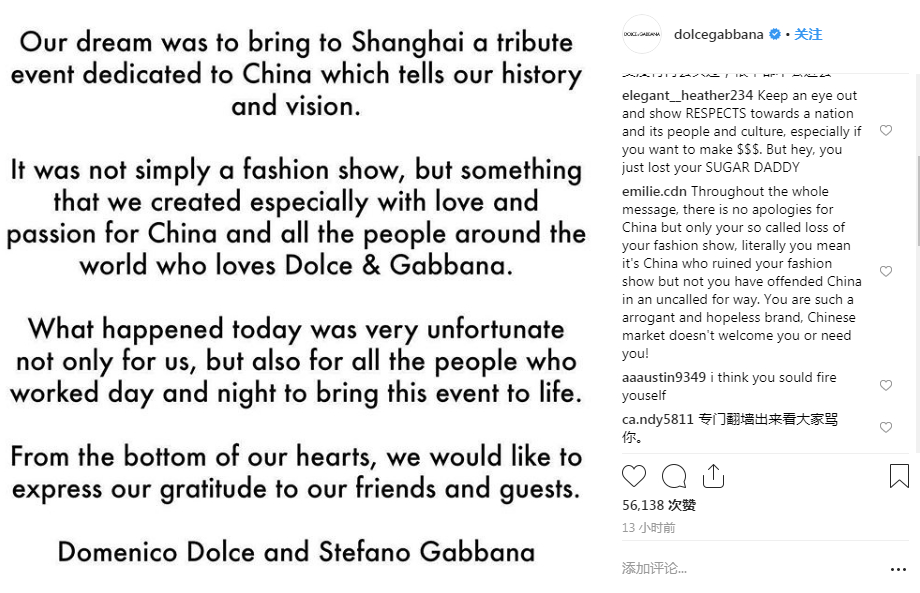
The explanation letter posted by @dolcegabbana account on Instagram, and some netizens' responses /Screenshot via Instagram
The explanation letter posted by @dolcegabbana account on Instagram, and some netizens' responses /Screenshot via Instagram
The phenomenon is not rare even among big brands. Valentino was also once denounced for inappropriate behaviors. In late 2015, it adopted African artistic designs and cornrows for model presentations but chose mostly white models to present them.
It seems that all brands need to do deep research into the culture before using it in their products, and this is not only for the good of their branding but also a basic respect for cultures and races.






